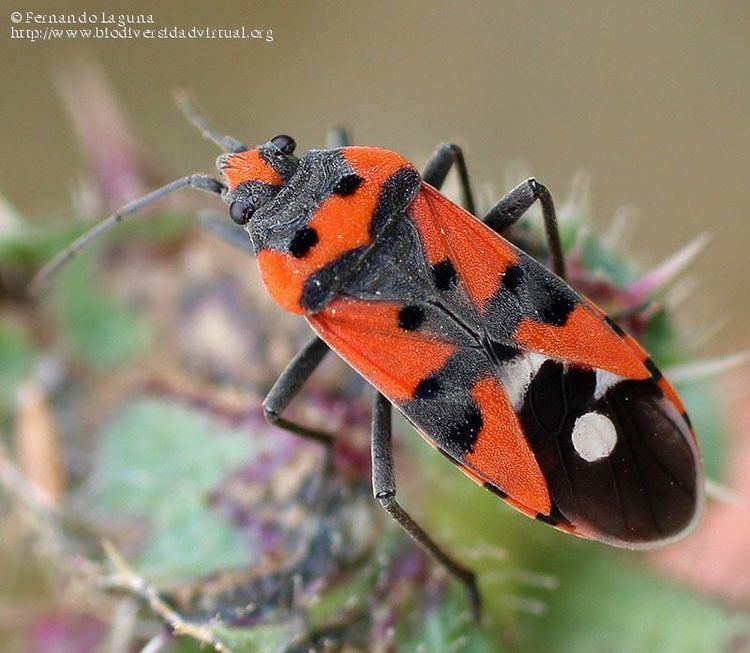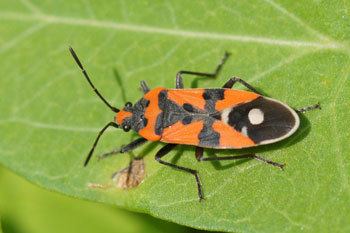Scientific name Lygaeus equestris Rank Species | Higher classification Lygaeus | |
 | ||
Similar Lygaeus, Insect, True bugs, Lygaeidae, Spilostethus | ||
Harlequin bugs mating lygaeus equestris
Lygaeus equestris, common name Black-and-Red-bug, is a species of ground bugs belonging to the family Lygaeidae, subfamily Lygaeinae.
Contents
- Harlequin bugs mating lygaeus equestris
- What are these bugs called western boxelder bugs lygaeus equestris
- Description
- Distribution
- Subspecies
- References
What are these bugs called western boxelder bugs lygaeus equestris
Description

These bugs can reach about 11 to 12 millimetres (0.43 to 0.47 in) in length. They have a characteristic red-black pattern, fully developed wings and long, powerful legs. The hemelytra have two transverse bands that reach the margin and a round white spot on the membrane. Scutellum is without bristles but with tiny hairs. The black band close to the eye is wider than the same.

This species is very difficult to differentiate from Lygaeus simulans, that has a scutellum with long bristles, antennae with angulous tubercles and a larger red area on the head.

The red-black pattern has a deterrent effect and serves to protect the insect (Mullerian mimicry or Batesian mimicry). By storing the toxic ingredients of their food plants, they are unpalatable to potential predators.

These bugs feed on plant juices, particularly milkweed (Vincetoxicum hirundinaria), Spring pheasant's eye (Adonis vernalis) and sometimes also on dandelions.
Distribution

It is mainly present in Albania, Austria, Belgium, Bosnia, Bulgaria, Croatia, Czech Republic, Denmark, Finland, France, Germany, Greece, Hungary, Italy, Macedonia, Montenegro, Poland, Portugal, Romania, Russia, Serbia, Slovakia, Slovenia, Spain, Sweden and Switzerland.
